Systematic Position
- Division: Lycophyta / Lepidophyta
- Class: Eligulopsida
- Order: Lycopodiales
- Family: Lycopodiaceae
- Genus: Lycopodium
Also known as club mosses, Lycopods, creeping pines or tailing pines.
Ligule: A membranous outgrowth projecting from the leaf sheath.
On the basis of ligule, Lycophyta has 2 classes:
- Eligulopsida: Lycopodium phylloglossum
- Liqulopsida – Isoetales, Selaginellales
Best safe and secure cloud storage with password protection
Get Envato Elements, Prime Video, Hotstar and Netflix For Free
Best Money Earning Website 100$ Day
#1 Top ranking article submission website
Around 200 spp. in world specially in tropics shows great diversity in form because of which divided into 2 gubgenus.
- Urostachya: L selago, L. Phlegmarcia
- Rhopalostachya: L. clavatum , L. cernuum, L. alpinum
Difference between Urostachya and Rhopalostachya
| Urostachya | Rhophalostachya |
| Aerial axis is erect or pendulous. | Main axis is prostate. |
| Adventitious roots are present at the base. | Adventitious roots arise from any part of the prostrate axis. |
| Bulbils are usually rare. | Bulbils are common. |
| Sporophylls are not specialised. | Sporophylls are specialized. |
External structure
Stem
Stem in Urostachya are erect and pendant, they never have creeping axis. In most species stems are much branched with dichotomous branching. Typically have prostate stem bearing upright branches. Stem remains densely clothed with small leaf.
Roots
Roots are adventitious. Dichotomously branched and fibrous in nature.
In Urostachya, the roots are not formed along the entire length of the stem. The roots arise only at the base of the stem.
In Rhophalostachya roots arise along the entire length of the stems base.
Leaves
Leaves are simple, sessile, lense shaped with broad base. They have single midrib that does not quite extended to the axis. This type of leaves are called microphylls.
Leaves are two types:
- Vegetative leaves or sterile leaves
- Sporcophylls leaves: Bear Sporangia on upper surface.
Sporophylls are smaller, paler in color with serrated margin.
Veg. leaves have smooth margin. The leaves are arranged spirally in wholly or in pairs L. clavatum (whorl)
Reproduction
- Vegetative
- Asexual
- Sexual
Vegetative reproduction
A) By bulbil or gemma
E.g. L. selago, L. lucidulum.
Bud like structure are formed near the stem tips. According to Smith (1990), these are modified leaves since they have same position, same dorsiventrality and the same vascular supply as a leaf.
According to another view, interpreted as modified sporangia.
B) By dormant buds
E.g. L. innundatum
The tip of rhizome becomes resting bud and under favorable condition give rise give to new plant.
(C) By root tubercule: E.g, L. cernuum,, L. ramulosum.
(D) By fragmentation: E.g. L. phlegmaria.
Asexual reproduction
Plant is sporophytic. Spores are developed in the sporangia.
Sporangium development
Sporangia are found singly on the upper surface of the sporophylls near the base. e.g. L. lucigulum, on in the axils of the sporophylls e.g. L. innundatum and protected or from the stem close to the leaf base (sub folliar) and exposed, e.g. L. squatiosum or adaxial surface of the sporophylls (foliar) and protected e.g. L. cernuum, L. clavatum.
In spp. of Urostachya, sporophylls are very similar to the microphylls are not grouped in strobili. In spp. of Rhophalostachya, sporophylls are grouped together into distinct strobili or cone which are terminal on the main stem on or lateral branches.
Germination of spores and prothallus development
Spores germinate within few days of liberation from sporangium. Sporangium produce aerial or surface prothalli, mature quickly,
- live for one year ex. Lycopodium cernuum, L. innundatum.
- take longer time are subterranean prothalli. E.g. L. clavatum: comparatively large, tuberous, long lived.
Upto 5 celled stage nourishment from five celled structure. Further development proceeds only when hyphae enters the basal cells, and maintain symbiosis. After the establishment of endophytic mycorrhiza, the apical cells becomes active and cuts of six segment. Later, apical cell is replaced by group of meristematic cells which divide and re-divide to give rise to prothallus.
Development of Antiherridium
Same as Psilotum.
Only difference in antherozoid structure.
Oval in shape about twice as long as wide.
Anterior end is somewhere pointed and has two cilia. Thus reasonably antherozoids of bryophytes. Antherozoid of L. phegmaria is somewhat twisted.
On the basis of the mode of development of sporangium:
| Eusporangiate | Leptosporangiate |
| Sporangium originate from group of initial cells. | From single initial cell. |
| Sporangium has multilayered wall. | Sporangium has single layered wall. |
| The spore output is unlimited containing large number of spores. | Limited number of spores. |
| Antheridia is sunken within thallus and contain large number of spores. | Antheridia projecting out of the thallus and have limited number of spores. |
| First division of zygote in transverse. | Vertical or oblique. |
| Example: Psilotum, Lycopodium. | Example: Pteris, Marsilea. |
 Plantlet The Blogging Platform of Department of Botany, University of Dhaka
Plantlet The Blogging Platform of Department of Botany, University of Dhaka
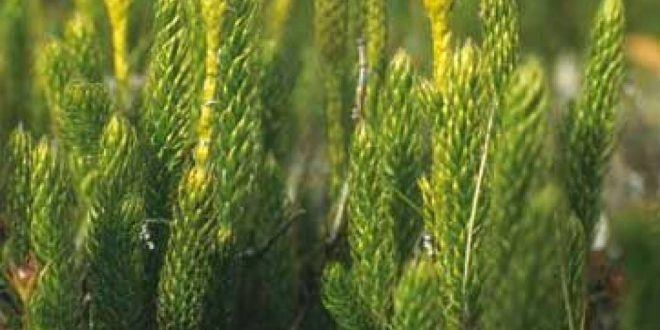

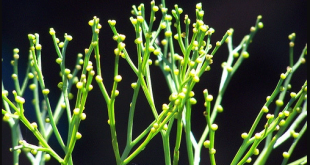
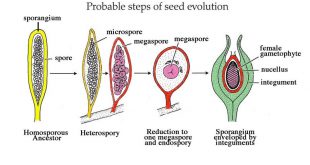
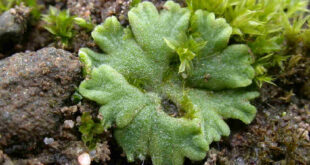
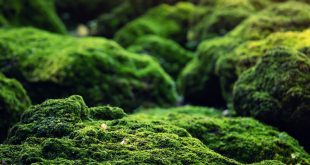
So much interesting 💙